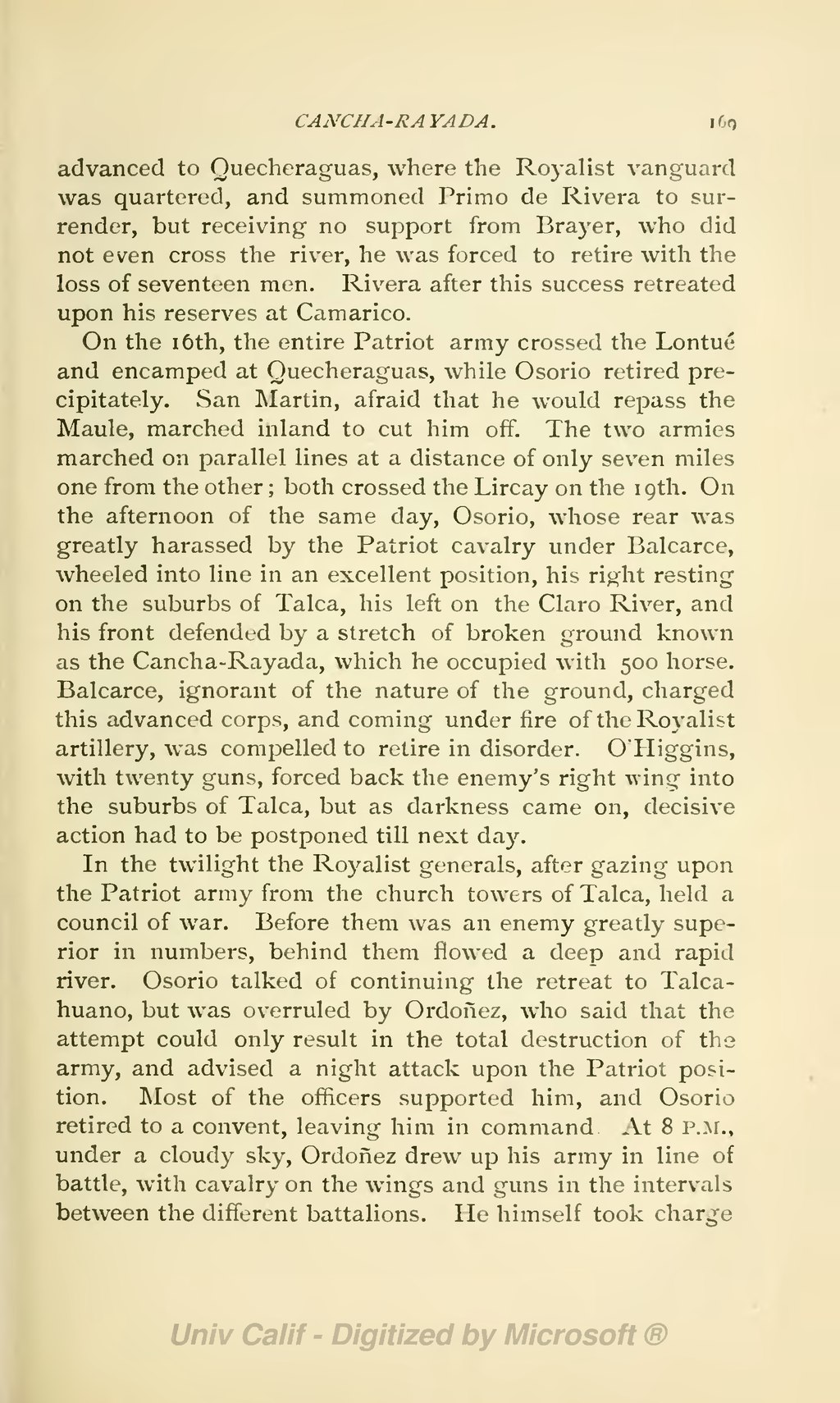advanced to Quecheraguas, where the Royalist vanguard was quartered, and summoned Primo de Rivera to surrender, but receiving no support from Brayer, who did not even cross the river, he was forced to retire with the loss of seventeen men. Rivera after this success retreated upon his reserves at Camarico.
On the 16th, the entire Patriot army crossed the Lontué and encamped at Quecheraguas, while Osorio retired precipitately. San Martin, afraid that he would repass the Maule, marched inland to cut him off. The two armies marched on parallel lines at a distance of only seven miles one from the other; both crossed the Lircay on the 19th. On the afternoon of the same day, Osorio, whose rear was greatly harassed by the Patriot cavalry under Balcarce, wheeled into line in an excellent position, his right resting on the suburbs of Talca, his left on the Claro River, and his front defended by a stretch of broken ground known as the Cancha-Rayada, which he occupied with 500 horse. Balcarce, ignorant of the nature of the ground, charged this advanced corps, and coming under fire of the Royalist artillery, was compelled to retire in disorder. O'Higgins, with twenty guns, forced back the enemy's right wing into the suburbs of Talca, but as darkness came on, decisive action had to be postponed till next day.
In the twilight the Royalist generals, after gazing upon the Patriot army from the church towers of Talca, held a council of war. Before them was an enemy greatly superior in numbers, behind them flowed a deep and rapid river. Osorio talked of continuing the retreat to Talcahuano, but was overruled by Ordoñez, who said that the attempt could only result in the total destruction of the army, and advised a night attack upon the Patriot position. Most of the officers supported him, and Osorio retired to a convent, leaving him in command. At 8 p.m., under a cloudy sky, Ordoñez drew up his army in line of battle, with cavalry on the wings and guns in the intervals between the different battalions. He himself took charge
